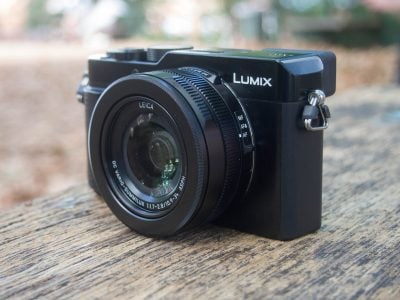Panasonic Lumix LX100 II review
-
-
Written by Ken McMahon
Intro
The Panasonic Lumix LX100 II is a compact for enthusiasts with a larger-than-average Four Thirds sensor, built-in viewfinder, bright zoom lens and loads of manual controls. Announced in August 2018, it joins the four year old LX100 in the Lumix range which remains on sale.
The LX100 II inherits a number of features from its predecessor including much the same body and controls, the 24-75mm (equivalent) f1.7 – 2.8 Leica DC Vario Summilux lens, the 2.7 million dot electronic viewfinder, and a Four Thirds sensor which supports multiple aspect ratios. Panasonic has however upgraded the resolution of the sensor, which allows the LX100 II to capture 17 Megapixel images in the 4:3 shape compared to 12 on the original LX100; the LX100 II actually employs the same 20 Megapixel sensor as the Lumix GX9, but due to the lens design, doesn’t exploit the full area, hence the 17 Megapixel maximum resolution (there’s a full explanation of how this works later in the review).
The screen annoyingly remains fixed which will frustrate vloggers or anyone shooting at high or low angles, but it is now at least touch-sensitive which in turn allows it to support Panasonic’s latest 4K Photo modes including Post Focus and Focus Stacking; Panasonic’s also boosted the resolution of the panel to 1240k dots. The LX100 II also supports the auto marking, sequence composition and bulk saving modes introduced on the Lumix GX9, and additionally benefits from the latest picture styles including L Monochrome and L Monochrome D, as well as Grain Effects and new focus and aperture bracketing options.
The new model retains its predecessor’s wifi capability and adds BlueTooth which can be used to fire the camera shutter remotely using the Panasonic Image App. USB charging, and live view boost mode for low light shooting complete the picture.
For the same money, or even a little less than the Lumix LX100 II you can get the Sony RX100 VA (a slightly modified version of the V) which has a smaller 1in sensor but one with embedded phase detect autofocus, plus a smaller body, OLED viewfinder (which provides a more stable image than the field-sequential LCD viewfinder on the Lumix), a built-in ND filter (handy for video-friendly shutter speeds and long exposure stills), and a screen that can flip 180 degrees up to face you for vlogging. And if you’re willing to spend a little bit more, Canon’s PowerShot G1X Mark III comes into range. The G1X Mark III has a fully-articulated screen, an OLED viewfinder, built-in ND filter and a larger APSC sensor with Dual Pixel CMOS AF, albeit coupled with a dimmer lens and with no 4k.
In my review I’ve compared the Lumix LX100 II with the PowerShot G1X Mark III and the Sony RX100 VA, and you can also see how it compares with the G1X Mark III in terms of picture quality and noise performance in my real-life tests.
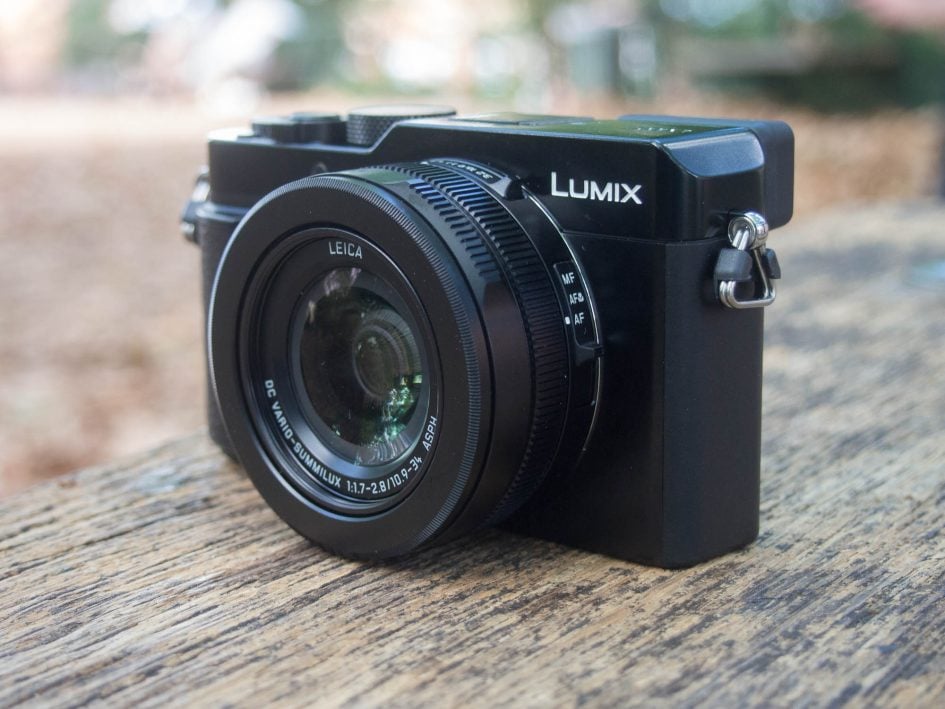
The LX100 II has a restyled grip, but otherwise looks very similar to its predecessor, which we’ll now have to call the LX100 I. Unlike the Sony RX100 VA and PowerShot G1X Mark III, it lacks a popup flash but, like the PowerShot G1X Mark II it does have a hotshoe. And there’s a bonus – included in the box is a small flash accessory.
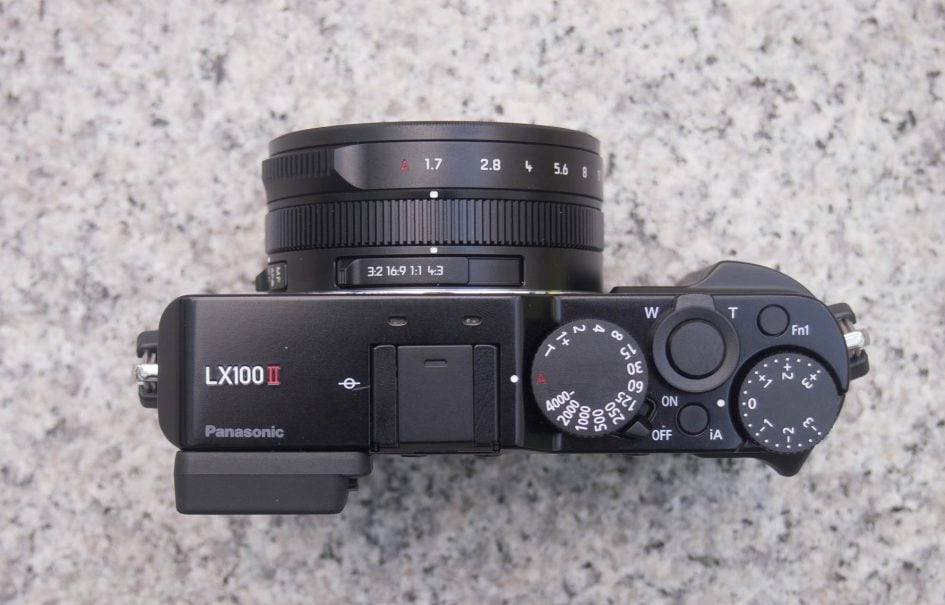
There’s no surprises on the top panel which, as before, features shutter speed and exposure compensation dials. There’s plus or minus three stops of exposure compensation on the dial, but if you disable it, you can set plus or minus five stops using the lens ring. Note the aperture ring on the lens barrel – a physical control that’s absent on most compacts including the Sony and Canon compared here. In terms of where the aperture changes, the LX100 only offers f1.7 between 24 and 25mm at which point it slows a fraction to f1.8. The aperture then closes to f1.9 at 26mm, f2 at 27mm, f2.1 at 28mm, f2.2 at 30mm, f2.3 at 34mm, f2.4 at 37mm, f2.5 at 41mm, f2.6 at 44mm, f2.7 at 49mm, and finally at f2.8 from 52-75mm. On the Sony RX100 III, IV and VA, the f1.8 aperture is only available at 24mm, slowing to f2 at 25mm and f2.5 at 28mm. Then at 32mm the lens slows to f2.8 and stays there for the rest of the range up to 70mm. The G1X Mark III’s lens starts at f2.8 when zoomed wide to 24mm equivalent. It closes a notch to f3.2 at 26mm, then to f3.5 at 29mm, then to f4 at 33mm; so it loses a stop by the time you’re at 33mm. Then it closes to f4.5 at 39mm, f5 at 48mm and finally reaches the minimum value of f5.6 between 57mm and 72mm. So between 57 and 72mm, the lens is two stops dimmer than at 24mm. Remember the impact of these apertures over depth-of-field has to be taken with the actual focal length and sensor size into account and I’ll present some real-life comparisons in a moment.
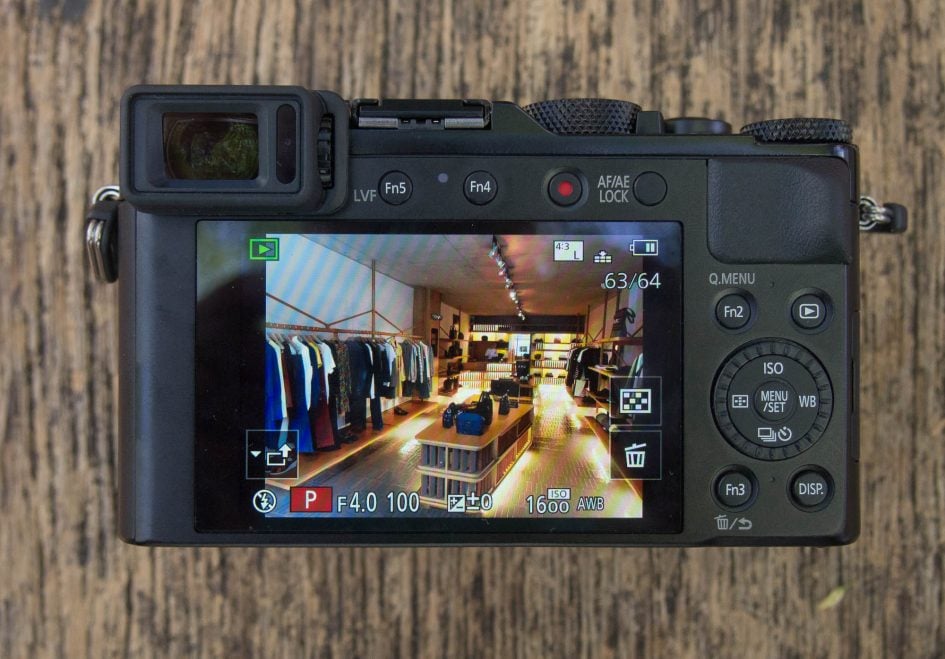
Round the back the biggest difference is the new touch-screen with an increased resolution of 1240k dots. The touch screen is a huge improvement, making it easier to set the AF area and pull focus for movies as well as when using the 4k shooting modes. However, vloggers will be disheartened by the lack of an articulated screen and that’s a feature that both the Canon PowerShot G1X Mark III and Sony RX100 VA can offer, though the Sony lacks a touch-screen. Note you can also use the screen on the LX100 II as a touchpad, allowing you to reposition the AF area by touch as you compose through the viewfinder, but left-eyed shooters may find their nose accidentally moving the AF point and with no option to reduce the active screen area, you may simply turn off the feature instead. I feel there’s an opportunity for the LX100 series to sport an AF joystick in the future.
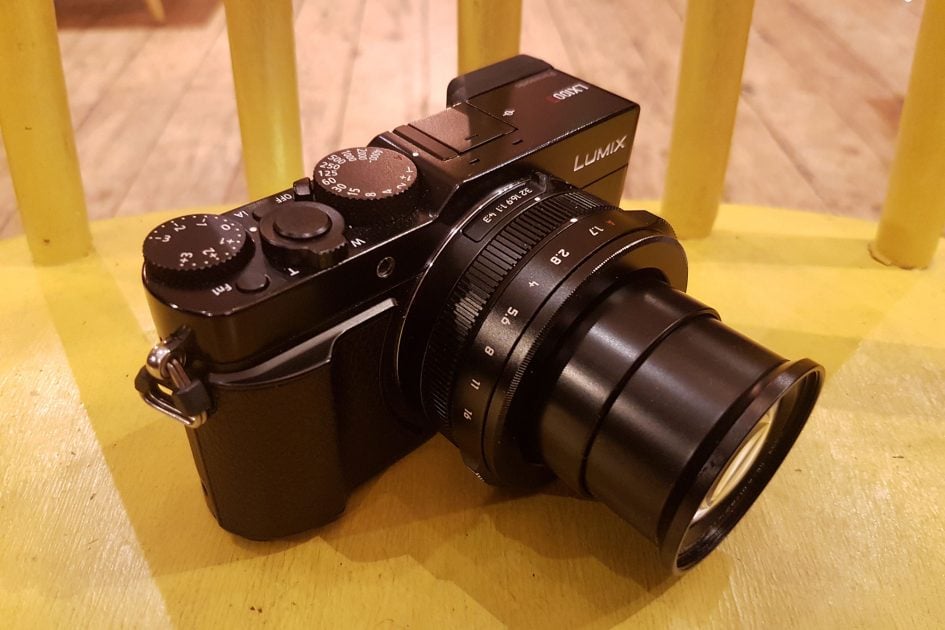
Unlike most compacts, the LX100 II employs a physical power switch, which you’ll need to flick whether you’re powering-up to take a photo or simply to playback an image or movie. In contrast, most compacts can power-up into playback simply with a prolonged push of the play button. The reason this is worth mentioning is the LX100 II extends its lens every time the power switch is flicked-on even if you only want to then playback images, and this not only delays the process but can increase the vulnerability – not just to the lens barrel when you’re handling the camera to view rather than to shoot, but also accelerate the risk of dust gradually entering the system. Dust is a risk to all lenses that extend and retract, so having the barrel unnecessarily do so during playback is frustrating. Indeed there are reports of the original LX100 proving to be susceptible to dust over time, and unlike an interchangeable lens camera, it’s not straightforward to open the body for a clean. I asked Panasonic if they’d done anything to better combat dust on the LX100 II and was told improvements had been made, but I received no further details. Ultimately dust is rarely an issue during a review period and only typically becomes visible after several months of heavy use or longer. So while neither Ken nor I experienced dust issues when testing the LX100 II for several weeks, only time will tell if it’s any better-equipped to deal with it than its predecessor. I’ll report back as and when I have more details or discoveries.
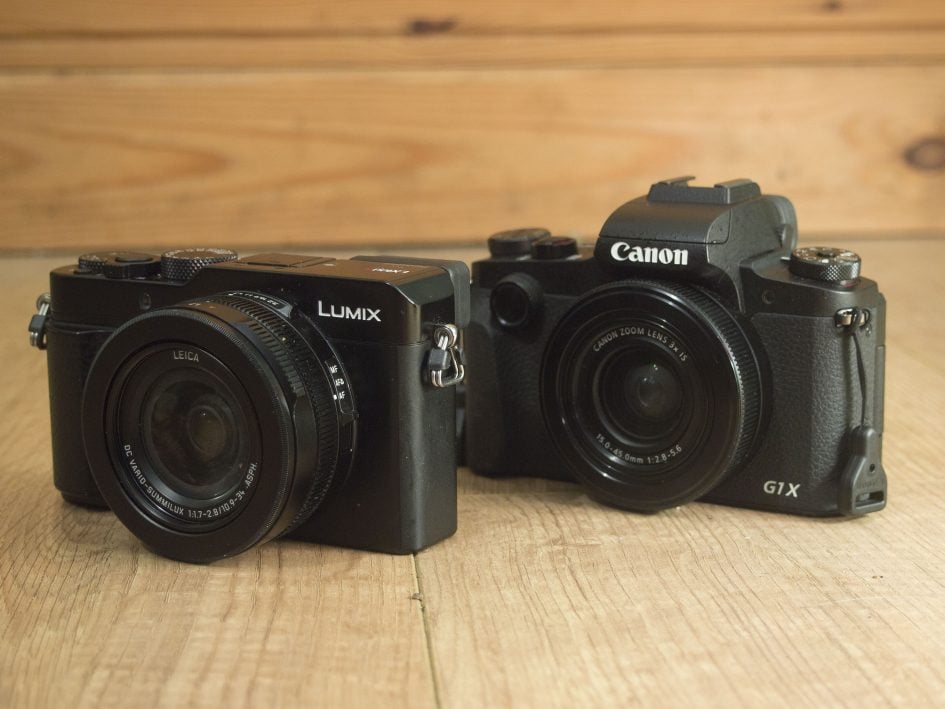
The Lumix LX100 II feels more compact than the PowerShot G1X Mark III. They’re both the same width and the Lumix LX100 III’s lens sticks out a lot further, but the PowerShot G1X Mark III’s ‘hump’ adds significantly to its height, making it more difficult to slip in and out of a coat pocket.
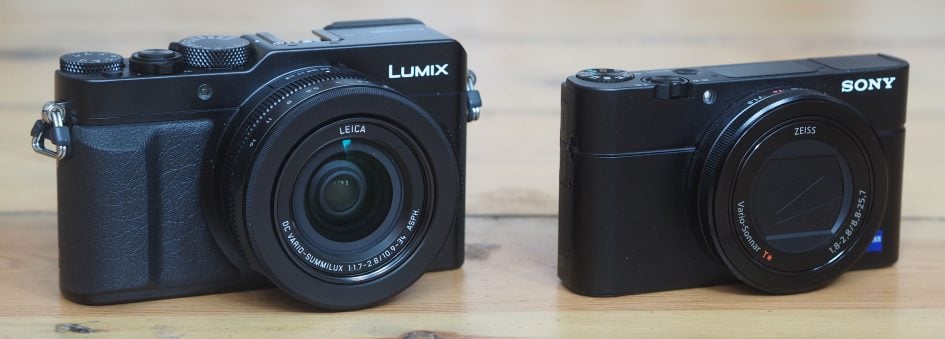
If you want a premium compact that’s truly pocketable, though, the Sony RX100 VA, which is smaller all round and nearly 100g lighter than the LX100 II, is the one to go for.
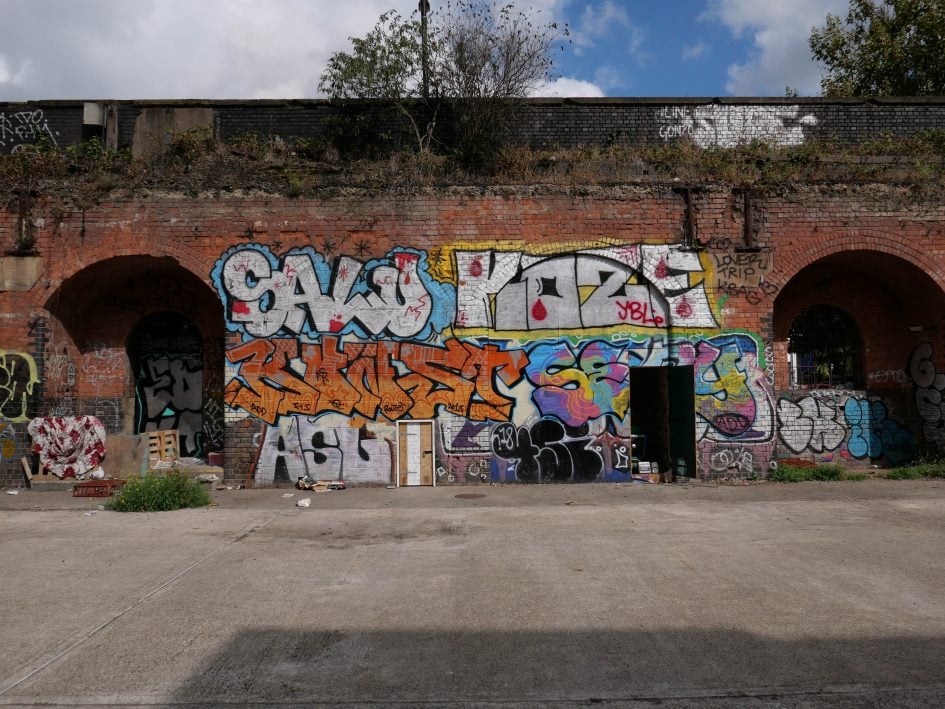
The Lumix LX100 II’s sensor has 21.77 megapixels, but the lens specification means only the central area, with a resolution of 17 Megapixels, is used. That’s still 5 Megapixels more than on the LX100 I though. If you want to understand why the Lumix LX100 II doesn’t use the full sensor area see Gordon’s in-depth explanation below. In terms of the physical size of its sensor, the Lumix LX100 sits between the Canon PowerShot G1X Mark III with its APSC sensor, and the Sony RX100 VA which has a 1 inch sensor.
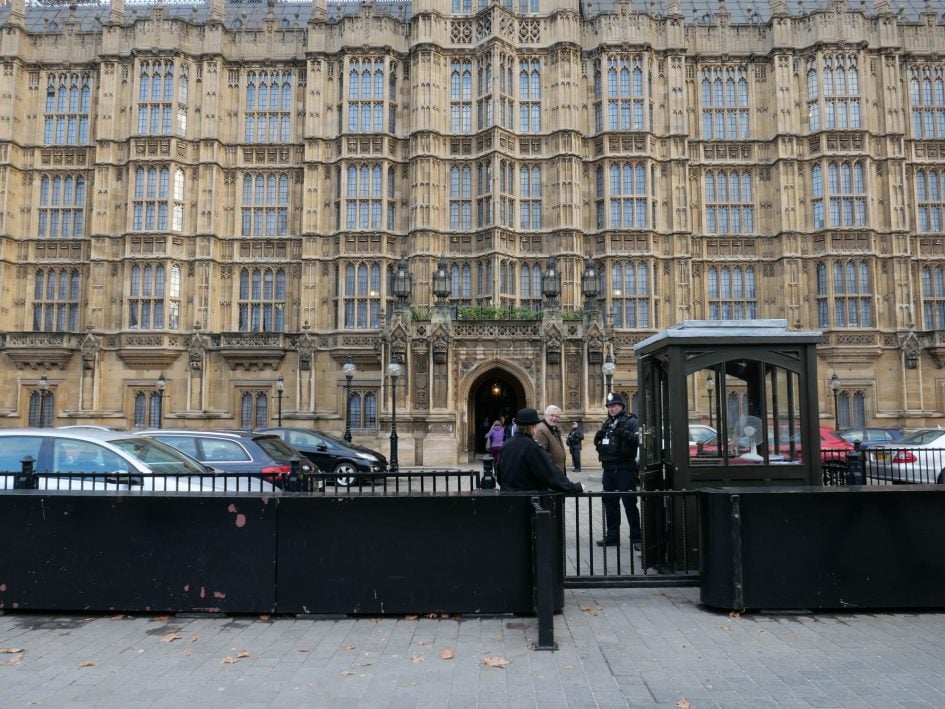
The Lumix LX100 II’s fixed zoom lens has a 35mm equivalent range of 24-75mm and this shot shows the field of view at the wide angle end. By travel-zoom standards it isn’t what you’d call generous, but it’s ideal for group shots and landscapes and, at the long end of its range, portraits. It’s also fairly typical of cameras in this class and very similar to the PowerShot G1X mark III’s 24 – 72mm range (though not as bright, about which more in a moment), and also the Sony RX100 VA’s 24-70mm.
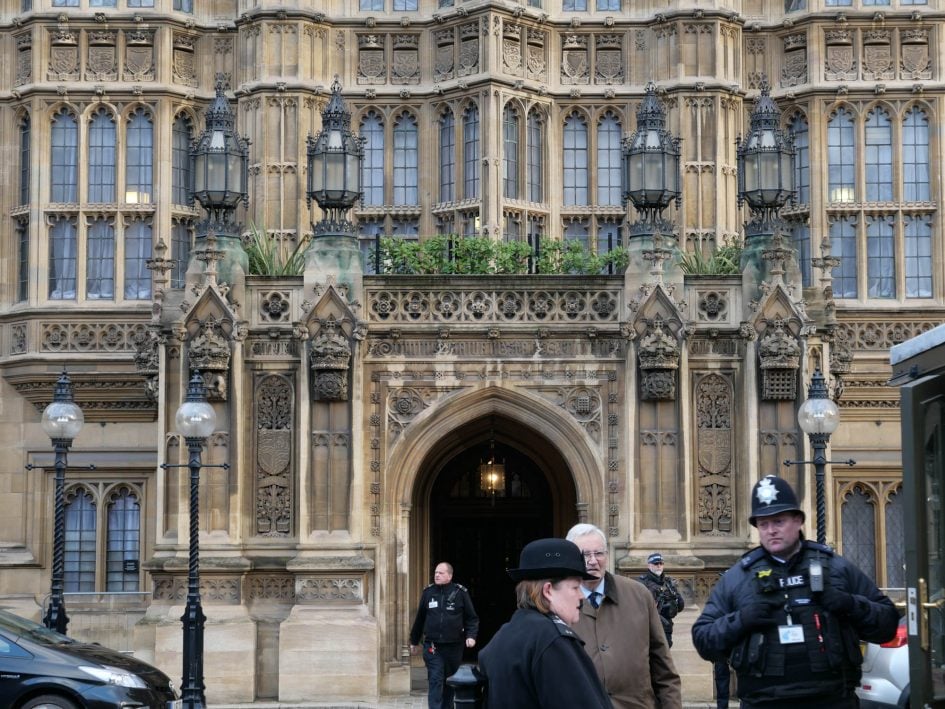
Here’s how the field of view changes when you zoom the LX100 II to its maximum 75mm focal length. If you compare it with the shot above, you’ll see that it doesn’t get you in all that much closer to the action. What it is useful for is framing shots to remove unwanted detail and, of course, portraiture. 75mm is an ideal focal length for portraits, and with a wide enough aperture you can blur the background, read on to see how well the Lumix LX100 II’s lens manages that and how it compares with the PowerShot G1X Mark III and Sony RX100 series.

I shot this in aperture priority mode with the Lumix LX100 II zoomed to its maximum 75mm equivalent focal length and the aperture set to f2.8 – as wide as it will go when fully zoomed in. This was shot on a busy street in Camden, North London and, as you can see, it’s difficult to pick a moment when there isn’t traffic, a passer by, or some other distraction behind the subject. I think the LX100 II has done a reasonably good job of blurring the background, but a little bit more blur wouldn’t go amiss. The only way you’ll achieve that with the LX100 II is to get even closer to the subject.

Here’s the same subject captured moments later with the Canon PowerShot G1X mark III with its 24-72mm f2.8-5.6 lens. So here we’re zoomed in to 72mm with aperture set to its f5.6 maximum. You might expect that at f5.6 the G1X Mark III would blur the background less than the Lumix LX100 II at f2.8, but the Canon’s bigger sensor (and longer actual focal length) also plays a role and in fact I don’t think there’s much between these two images in terms of the degree of background blur.
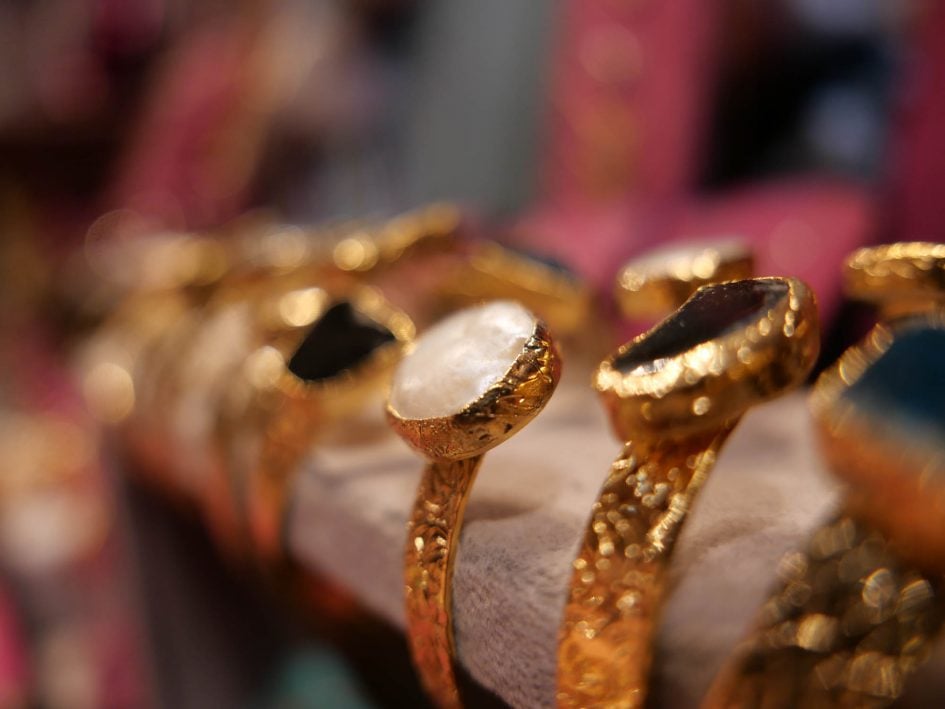
Flip the switch on the Lumix LX100 II’s lens barrel to the macro AF position and it can focus as close as 3cm from the subject. That’s the published range, though I found I could get a little closer than that. At this distance with the lens set to its maximum f1.7 aperture the depth of field is no more than a couple of millimetres. In fact this subject probably would have benefitted from closing the aperture to provide a little more depth of field – but it’s nice to have the option and to be able to use the maximum aperture to create a blurred background when you’re not quite so close.

Here’s the same shot taken moments later with the Canon PowerShot G1X III. The G1X Mark III’s closest focus distance is (by comparison with the Lumix LX100 II) a whopping 10cm. As you can see from the above shot that makes a big difference in terms of results if you want to reproduce a smallish object, like a ring, or a small creature in intimate close-up detail. The other difference is that, at this distance (and at the G1X Mark III’s f2.8 maximum aperture) the background isn’t blurred to anything like the same degree.

Here’s another macro shot from the Lumix LX100 II, this time taken from a little further back – around 5cm. At the LX100 II’s maximum f1.7 maximum aperture, the depth of field here is still quite shallow and the background is nicely blurred.

This time, the result from the PowerShot G1X Mark III at 10cm and f2.8 is a lot closer in appearance to the Lumix LX100 II; the background is nicely blurred, though not quite to the same degree as the Lumix.

To compare the rendering between the LX100 II and the Sony RX100 VA, I shot this beer bottle with previous versions of both cameras (which have the same lenses) from the same distance and with both at 24mm; the Lumix is on the left and the Sony on the right. This was from a distance of 5cm, which is the closest focusing distance for the Sony.
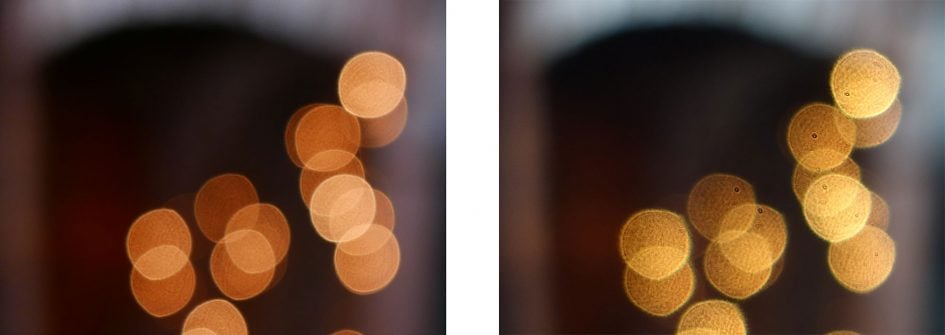
Above are crops from the previous comparison with the Lumix at 24mm f1.7 on the left and the Sony at 24mm f1.8 on the right. As you can see above, the depth of field looks very similar on both models, despite the LX100 sporting a slightly longer actual focal length and bigger sensor, not to mention a fractionally brighter aperture of f1.7 to f1.8, but my crop of the upper left corner reveals the actual rendering on the Lumix to be superior: cleaner ‘bokeh-balls’ and smoother transitions.
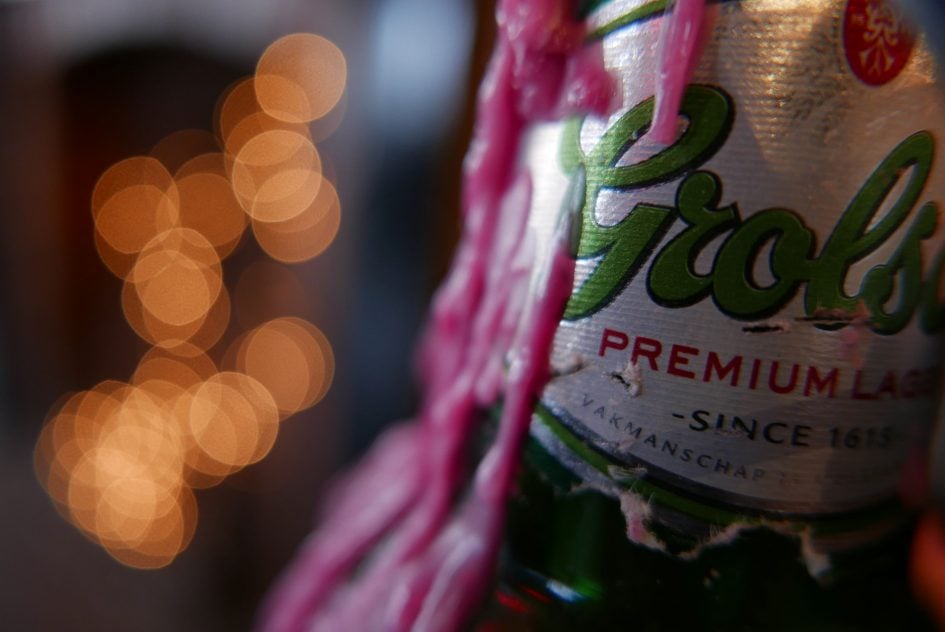
In the previous comparison above I had to shoot at the lowest common denominator, which was at a distance of 5cm to accommodate the Sony. But one of the key advantages the Lumix enjoys over it – and indeed most models in this class – is an even shorter minimum focusing distance of 3cm. To illustrate what you can achieve at 3cm, I moved closer to the bottle in the composition and took the shot above, which is clearly superior to anything the RX100 III, IV or VA can achieve at their closest focusing distances of 5cm. Indeed the very close focusing coupled with more attractive rendering are key benefits of the LX100.

My second macro comparison between the Lumix and the Sony was made at their longest respective focal lengths of 75mm for the LX100 (above left) and 70mm for the Sony (above right). Both models share a closest focusing distance of 30cm when zoomed-in (same as the G1X III), so there’s no compromises on subject distance in this comparison. Note in practice I found the Lumix could focus a bit closer though.
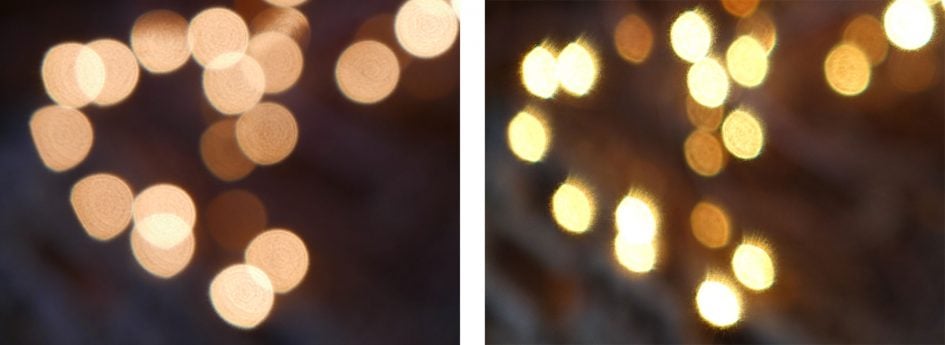
Here’s a cropped view of the defocused areas where I think the difference in quality is striking. Here the benefit of a longer actual focal length on the LX100 is quite apparent with a noticeably shallower depth of field. But again it’s the quality of the rendering that’s really striking here, with the out-of-focus lights on the LX100 looking far superior to those on the Sony. Based on these comparisons, I know which model I’d prefer to have to for shooting macro: the Lumix LX100 beats the Sony RX100 III, IV and VA not just on reproduction at wide angle, but on quality at both ends of the lens range.
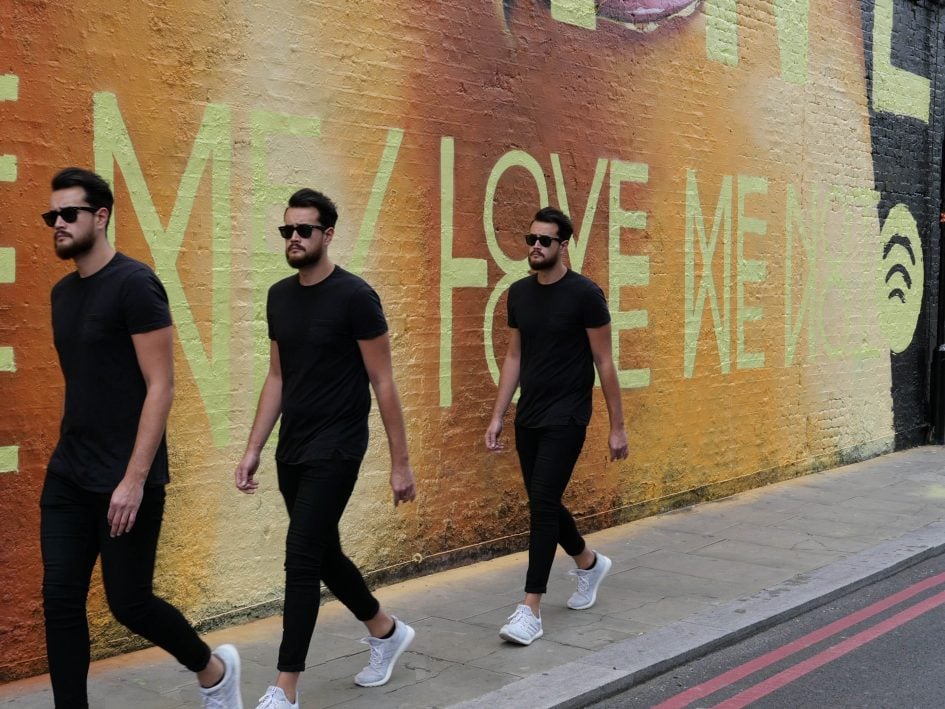
Moving on, the new Sequence Composition 4K photo mode allows you to shoot a hand-held burst and composite up to five frames. As with the 4k photo modes all the work is done in-camera, you first select the frames from the burst that you want to use and the LX100 II does the rest. Great for sports. Or Shoreditch hipsters.
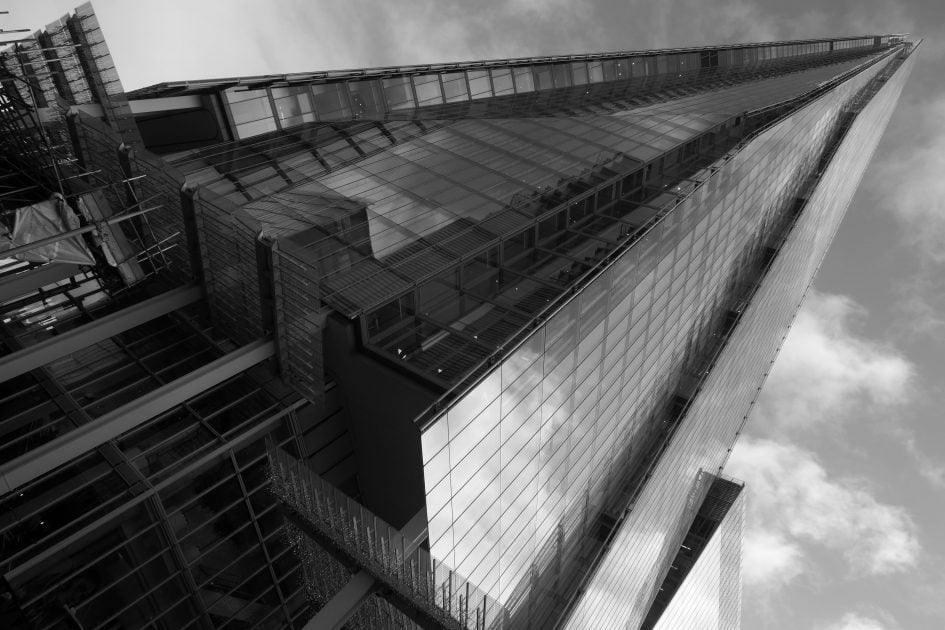
Above: The LX100 II gains Panasonic’s latest pair of black and white photo styles: L Monochrome and L Monochrome D, both of which deliver attractive high contrast results out-of-camera. Note there’s no Cinelike V or D for movie shooters though, who’ll instead turn to Natural for toned-down skin tones.
The Lumix LX100 II is a very capable movie camera, able to film 720p at 25 or 30p, 1080p at 25, 30, 50 or 60p, or 4k UHD at 24, 25 or 30p. When set to 4k, the longest clip length is reduced from 30 minutes to 15, although that’s still three times longer than the five minute 4k clips of the Sony RX100 VA and in my tests the LX100 II also proved much less susceptible to overheating; I also managed to squeeze six and a half 15 minute 4k clips out of one charge on the LX100 II, making just under 100 minutes in total. Like many cameras though, there’s a crop when filming in 4k, with the LX100 II applying a fairly noticeable 1.25x reduction vs 1.1x on the RX100 VA, which in turn results in a widest equivalent coverage of 30mm and eliminates any benefit of the LX100 II’s slightly larger sensor over the Sony, at least when filming 4k. I should also add that in the absence of a dedicated movie mode on the LX100 II, you’ll only see the crop applied by 4k once you press the record button and start filming; luckily when filming in 1080p though, you can just set the camera’s aspect ratio lever to 16:9 for a preview of the coverage.
The clip above, and the others below were filmed in the LX100 II’s 1080 /50p mode and for each of them I’ve also filmed a 4k version. Here, the Lumix LX100 was mounted on a tripod and the stabilisation was disabled. The only thing worthy of note here is the LX100 II’s continuous AF, which has a tendency to flit about a bit during the pan, though it’s very stable while zooming. You can see a 4k version of this clip on Vimeo here
For this handheld panning shot the stabilisation was enabled. The LX100 II’s continuous AF does a much better job this time and the other pleasing thing is that there’s no audible sound from the zoom motor, though the internal mic is picking up quite a bit of wind noise. You can see a 4k version of this clip on Vimeo here
This final clip was shot handheld indoors in low light. The quality is excellent with little evidence of noise, the white balance is good and the colours are nice and saturated. And once again the C-AF does a solid job in challenging conditions. You can see a 4k version of this clip on Vimeo here
Above: Another handheld example demonstrating continuous AF and stabilisation, filmed in 4k at 25p and with Auto ISO around 400 ISO. Download the original file (Registered members of Vimeo only).
Above: A vlogging test filmed in 4k at 25p with the lens at 24mm f1.7. The LX100 II isn’t ideal for vlogging as the screen doesn’t flip-out, making it hard to check your composition. It also doesn’t have a built-in ND filter, so here I’ve had to use a faster shutter speed than I’d like of 1/200. That said, there is a 43mm filter thread, so it may be possible to mount ND (or other) filters, but you will need to take care that they (or any step-down rings) don’t block the barrel retraction mechanism. Download the original file (Registered members of Vimeo only).
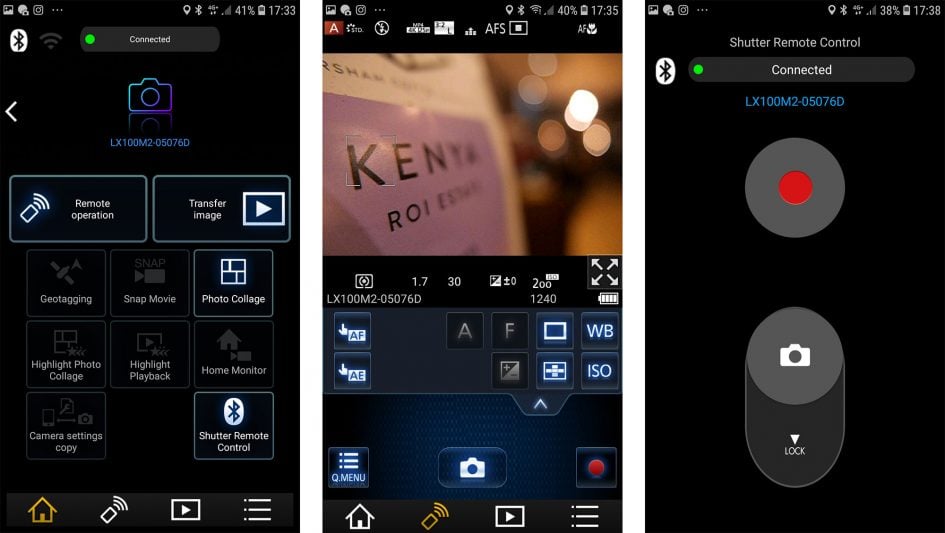
The LX100 II is equipped with Wifi and Bluetooth, giving it the full wireless capabilities of recent Lumix G bodies. As such the camera and your phone can remain connected over Bluetooth, seamlessly embedding GPS positions as you shoot, and there’s also a simple Shutter Remote Control mode in the app (see above right) which uses Bluetooth for an easy and responsive trigger without the need to initiate Wifi. Bluetooth can also be used to fire-up a Wifi connection in order to enjoy full remote control with a live image as well as copying images over to your phone. It all works very well and is one of the best wireless experiences around.
Panasonic Lumix LX100 II sensor and multi aspect ratios
The Lumix LX100 II is equipped with a Four Thirds sensor, indeed the exact same 20 Megapixel sensor employed by the Lumix GX9. This sensor measures 17.3x13mm and is therefore comfortably larger than the 1in sensors (13.2×8.8mm) used in the Sony RX100 and Canon G7X series.
But it’s important to note the Lumix LX100 II, like the original model, does not use its whole sensor. Due to the lens design, the imaging circle does not extend to the corners of the sensor, forcing Panasonic to crop the effective image area from 20 to 17 Megapixels. If the lens could have delivered an image to the entire sensor, then it would have been much larger, heavier and more expensive, so Panasonic took the decision to use a smaller lens and crop the sensor instead.
If you’ve never come across imaging circles before, then I understand if you’re a bit confused right now. Every lens produces a circle inside which the quality meets a desired standard. Outside this ‘imaging’ circle, there’s a brief transition of poor quality before darkness, so clearly camera designers need to make sure their sensors fit within the circle, or conversely, lens designers need to ensure they deliver a sufficiently big imaging circle to cover the desired sensor area.
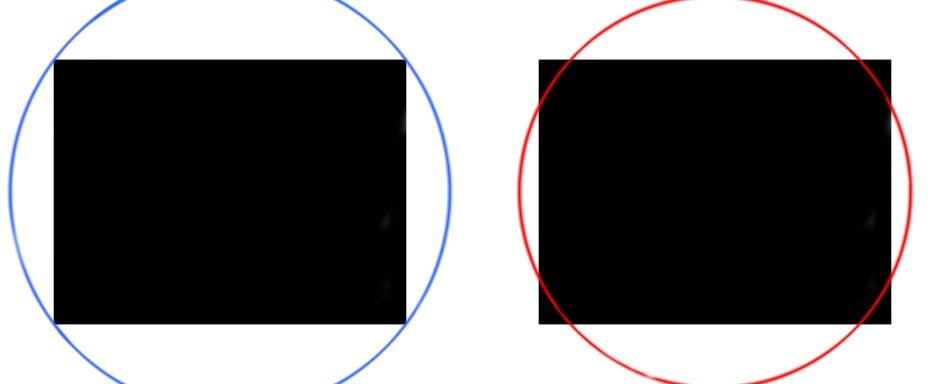
Above left: Blue circle represents imaging circle to cover whole sensor. Above right: Red circle represents actual imaging circle of LX100 II lens.
I’ve created a diagram to illustrate what’s going on with the LX100 II. Above left is the Four Thirds sensor in black with the blue circle indicating the minimum imaging circle to cater for it; this is what you’d need for Lumix G lenses to deliver a proper image on Lumix G mirrorless bodies. Above right is the same sensor, but this time with a smaller red circle representing the actual imaging circle of the LX100 II’s lens. It’s clear how if the image must remain inside the red circle, it needs to be cropped, hence the loss of around three Megapixels around the edges.
The native 4:3 shape of the whole 20 Megapixel sensor as used on the GX9 would deliver 5184×3888 pixels, while the cropped 4:3 shape on the LX100 II delivers 4736×3552 pixels (up from 4112×3088 pixels on the original model). It’s also now clear why the LX100 II’s lens can’t be made into an interchangeable lens for Micro Four Thirds cameras, as the imaging circle isn’t big enough to cover the sensor.
While it’s a shame the LX100 II doesn’t use its entire sensor area, the first important thing to take home from this explanation is the cropped area is still larger than the full area of the 1in sensor used by the RX100 and G7X series. Even with the crop, the LX100 II still has a larger effective sensor area: 15.4×11.6mm on the LX100 II versus 13.2×8.8mm on the RX100 series.
Secondly, Panasonic’s engineers realised they could exploit unused portions of the sensor that were still within the imaging circle to capture multiple aspect ratios without reducing the diagonal field of view. Normally when you want to shoot in wide aspect ratios like 16:9, you have to crop slices from the top and bottom of the native image, reducing not just the total number of pixels, but also the diagonal field of view – in turn making your lens less wide.

Above from left to right: 4:3 image capture on LX100 II, 3:2 image capture on LX100 II, 16:9 image capture on LX100 II. Note how the wider ratios capture a genuinely wider field of view rather than just maintaining the width and cropping the top and bottom.
But with the LX100 II, spare pixels to the side of the 4:3 image allow it to capture 3:2 and 16:9 shaped images that are actually a little wider as well as shorter. They maintain the same diagonal field of view, meaning the same 24mm wide angle coverage at any of these aspect ratios, and also lose fewer pixels in the process. So as a reminder, the LX100 II shoots 4:3 at 4736×3552 pixels, and offers 3:2 at 4928×3288 pixels and 16:9 at 4480×2520 pixels; notice how they’re getting wider as well as shorter. Compare that to the GX9 which shoots 4:3 at 5184×3888 pixels, 3:2 at 5184×3456 pixels and 16:9 at 5184×2920 pixels. You’ll notice while the GX9 of course starts with a larger image when shooting 4:3, by the time it’s cropped-down to 16:9, it’s actually coming close to the LX100 II’s resolution when shooting the same wide shape. So this multi-aspect capability is a nice spin on what could otherwise be seen as a negative side to the camera.
That said, there is one thing I’m not happy about: the 1:1 square aspect ratio. On Panasonic’s normal cameras with 4:3 shaped sensors, the 1:1 shape is a simple crop from the middle. So it shares the same pixel height as the 4:3 image, but is just narrower on the sides. For the LX100 II, Panasonic has done exactly that: taken the 4:3 image and shaved off the left and right sides, reducing a 4736×3552 pixel image to 3552×3552 pixels. Same height, but narrower.
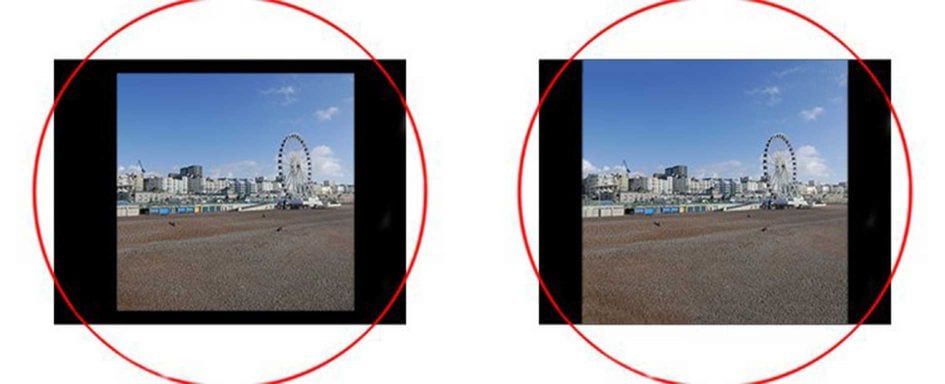
Above left: LX100 II 1:1 aspect ratio: cropped from 4:3 image. Above right: LX100 II imaging circle could actually accommodate a larger 1:1 image.
This may seem like the natural thing to do, and indeed is the same approach as the original LX100, but look at my diagram above and see how a square crop could in fact be taller than the 4:3 shape, indeed exploiting the full height of the sensor. A full-height square fits inside the imaging circle of the LX100 II just fine, and while it can’t quite maintain the same diagonal field of view as the other shapes, it could be captured with less of a compromise. Indeed a square crop made with the LX100 II’s full sensor height would be the same as a square crop on a GX9 or other 20 MP Micro Four Thirds cameras: 3888×3888 pixels, containing 15 Megapixels to the current 12.5 on the LX100 II, and importantly, a wider field of view too. I’d love to see this resolved in a firmware update, but since it didn’t happen for the original LX100 I’m not holding out hope here. I will however suggest it to Panasonic’s engineers. Again.
Check prices on the Panasonic Lumix LX100 II at Amazon, B&H, Adorama, or Wex. Alternatively get yourself a copy of my In Camera book or treat me to a coffee! Thanks!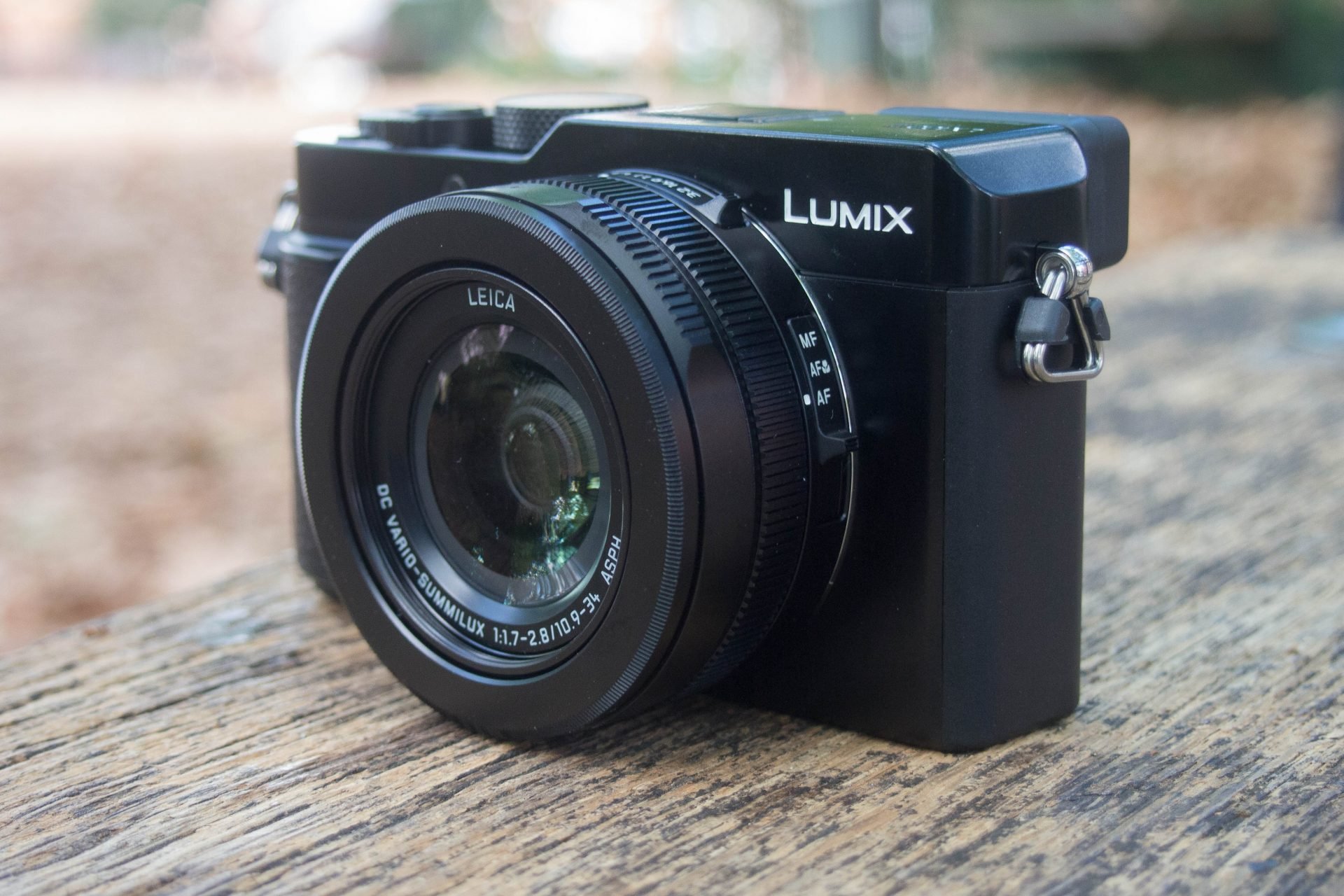
 The Panasonic Lumix LX100 II is a high-end compact aimed at enthusiasts. It inherits the controls, viewfinder, multi-aspect ratios and 24-75mm f1.7-2.8 lens of the original Mark I but upgrades the resolution to 17 Megapixels, adds a touchscreen, Bluetooth for easy wireless control, USB charging, and Panasonic’s latest 4K Photo modes and monochrome photo styles. While the screen is now touch-sensitive, it remains fixed in place which makes it less practical for shooting at high or low angles or vlogging compared to rivals like the Sony RX100 VA and Canon G1X Mark III, both of which have articulated screens (albeit not touch-sensitive on the Sony). The Canon and Sony also offer phase-detect autofocus systems which proved more confident for subjects in motion, as well as built-in ND filters and OLED viewfinders – the latter to my eyes, delivering a more stable image than the LX100 II’s field-sequential viewfinder panel. It's also worth remembering that while the LX100 II does have a Four Thirds sensor, the lens won’t exploit the full area - so while the active area still remains larger than a 1in sensor, it’s not by as much as you might think and makes little difference in practice beyond the ability to choose different aspect ratios without cropping. The 4k video quality is good, and while it incurs a tighter crop than the Sony RX100 VA, it can record clips three times longer and is less susceptible to overheating. The lens, now claiming better resistance against dust, is also comparable in range with the RX100 VA and G1X III, but focuses much closer and boasts superior rendering too, making it the preferred choice for macro shooters. Indeed the optics remain a highlight as does the chance to capture multiple aspect ratios without the usual cropping. It's also testament to the original design with its wealth of physical controls that the Mark II remains a very enjoyable camera to shoot with, so while it only represents a mild update, it remains a welcome one to bring the feature-set of this attractive compact up-to-date. If however you’re mostly interested in the lens and controls, consider the original Mark I which can be snapped-up for almost half the price.
The Panasonic Lumix LX100 II is a high-end compact aimed at enthusiasts. It inherits the controls, viewfinder, multi-aspect ratios and 24-75mm f1.7-2.8 lens of the original Mark I but upgrades the resolution to 17 Megapixels, adds a touchscreen, Bluetooth for easy wireless control, USB charging, and Panasonic’s latest 4K Photo modes and monochrome photo styles. While the screen is now touch-sensitive, it remains fixed in place which makes it less practical for shooting at high or low angles or vlogging compared to rivals like the Sony RX100 VA and Canon G1X Mark III, both of which have articulated screens (albeit not touch-sensitive on the Sony). The Canon and Sony also offer phase-detect autofocus systems which proved more confident for subjects in motion, as well as built-in ND filters and OLED viewfinders – the latter to my eyes, delivering a more stable image than the LX100 II’s field-sequential viewfinder panel. It's also worth remembering that while the LX100 II does have a Four Thirds sensor, the lens won’t exploit the full area - so while the active area still remains larger than a 1in sensor, it’s not by as much as you might think and makes little difference in practice beyond the ability to choose different aspect ratios without cropping. The 4k video quality is good, and while it incurs a tighter crop than the Sony RX100 VA, it can record clips three times longer and is less susceptible to overheating. The lens, now claiming better resistance against dust, is also comparable in range with the RX100 VA and G1X III, but focuses much closer and boasts superior rendering too, making it the preferred choice for macro shooters. Indeed the optics remain a highlight as does the chance to capture multiple aspect ratios without the usual cropping. It's also testament to the original design with its wealth of physical controls that the Mark II remains a very enjoyable camera to shoot with, so while it only represents a mild update, it remains a welcome one to bring the feature-set of this attractive compact up-to-date. If however you’re mostly interested in the lens and controls, consider the original Mark I which can be snapped-up for almost half the price.



